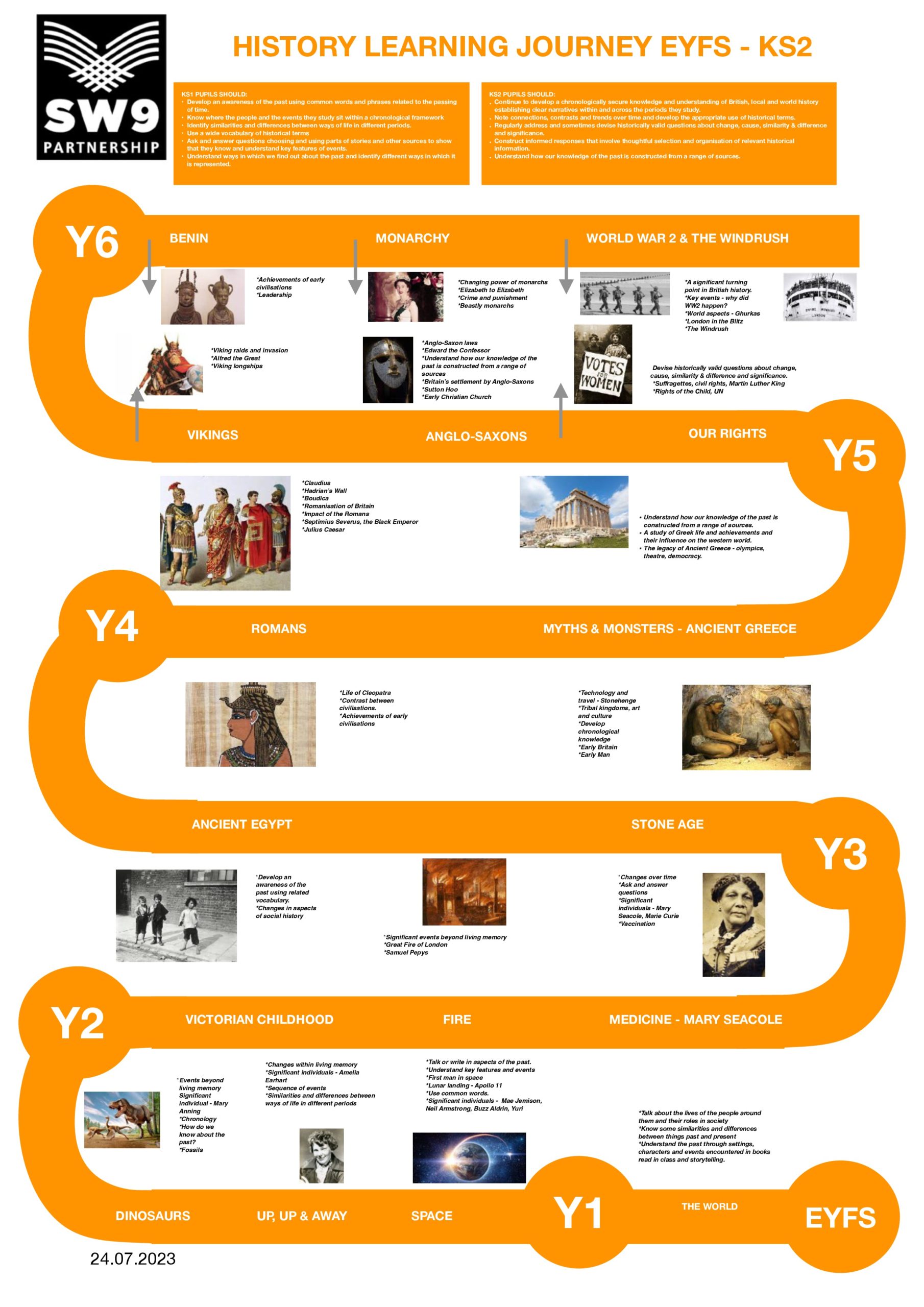Our Vision
Our vision at St. Andrew's is to inspire our children to be excited about learning and curious about the world they live in.
Our history curriculum:

click image to enlarge
How do we teach History?
History is embedded in our topic based approach with teachers planning sequences of lessons that make connections with prior learning while building children’s knowledge and skills.
Key Stage One:
The curriculum is planned to develop an awareness of the past, people, events and changes in a chronological framework.
It includes opportunities to identify similarities and differences, ask and answer questions and use sources to know and understand key features of the past.
The children will develop and use a wide vocabulary of historical terms.
Key Stage Two:
Learning will develop a chronologically secure knowledge and understanding of British, local and world history, establishing clear narratives within and across the periods they study.
This chronology will be referred to throughout Key Stage Two so that children become secure in their understanding of important historical events and eras.
It will also enable them to begin to identify trends over time and develop the appropriate use of historical terms.
The explicit mapping and rigorous teaching of vocabulary ensures that children can gain and deploy a historically grounded understanding of abstract terms such as ‘empire’ or ‘parliament’.
Each topic has an overview enquiry question to connect to ‘big ideas’. Opportunities to practise and embed skills are planned for so that they are revisited and refined over time.
The knowledge and skills that children will develop throughout each history topic are mapped across each year group and across the school to ensure progression.
We also maximise the opportunities that our local community and capital city have to offer in terms of its rich history and vast array of museums and cultural sites.
The curriculum is mapped across each year group to ensure connections and progression; medium term planning sequences learning intentions and learning activities including context, modelling, differentiation, challenge and enquiry; knowledge organisers carefully define the essential facts, vocabulary, timeline and individuals.
How do we evaluate learning in history?
The impact of our History curriculum can clearly been seen in the children’s books, by talking with the children and through our environment.
Our rich History curriculum is also evident in the texts that we have selected for our children to read and the connections within and across the curriculum.
The detailed unit overview outlines the main learning objectives – enquiry questions – that the children will investigate and answer during their learning.
The opportunity to evaluate and reflect on the learning is planned for regularly to enable the children to see how their learning is progressing.
Children’s progress is tracked through the school’s assessment programme and through key samples of work.
